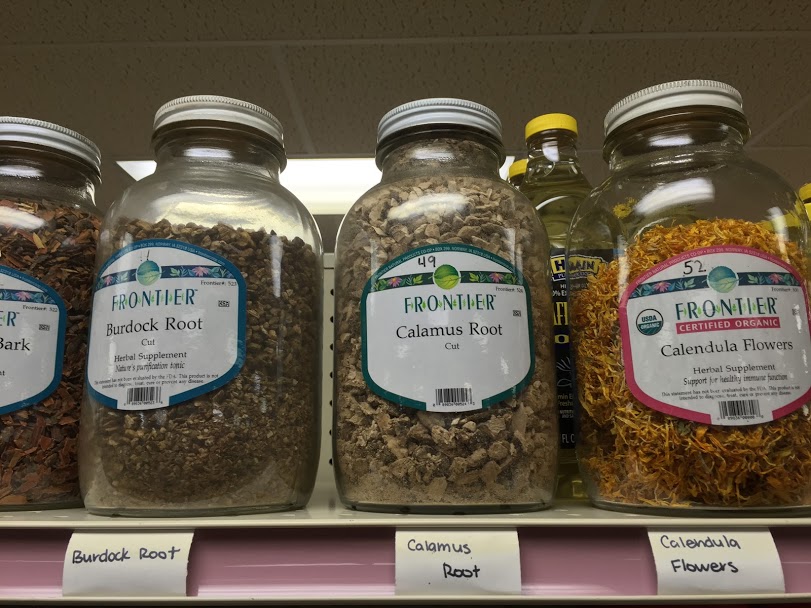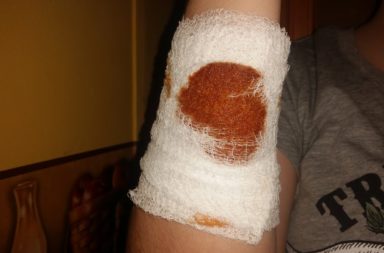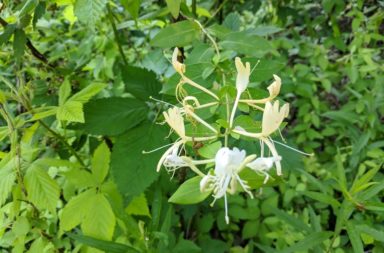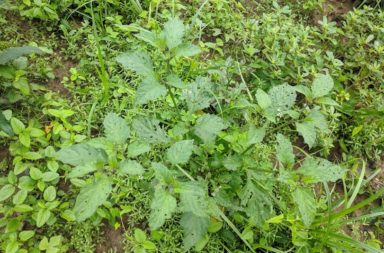Once you have made the wise choice to start growing your own medicine and have picked out a spot for your survival apothecary, it is time to start filling it up with healing edibles.
Contract to what many folks believe, herbs are not the only varieties of plants that can prevent illness and help treat us when we do get sick. In addition to herbs, your survival apothecary should also include some common garden items, roots, berries, bark from nearby trees, “weeds,” and flowers.
Top 7 Crops And Flowers For The Survival Apothecary

1. Onions
Yep, even the common onion should have a place of honor in a survival pharmacy. Just like garlic, onions can also help remove toxins and bacteria from the body. You can simply slice an onion and place a slice or two on the soles of your feet, cover them up with socks, and let the vegetable pull germs from your body while you sleep. Cooking with any variety of onion frequently, is also a great preventative against toxin build up and to help boost the immune system. Onion cough syrup might not sound the least bit yummy, but it is a natural tool to combat both the common cold and the flu. To make onion cough syrup, place two or three slices of onion in a skillet over low heat, pour in two cups of honey, and allow it to lightly simmer for half an hour. Remove the mixture from the oven and stir in a chopped garlic clove, and a pinch each of cinnamon and ginger root to improve the taste and to boost the immune system strengthening nature of the syrup. The onion cough syrup can keep for up to 14 days if kept sealed in a refrigerator. Adults can take 1 teaspoon of onion cough syrup up to four times a day to treat cold and flu symptoms.
Onion Cough Syrup Recipe For Children
2. Echinacea
The leaves and flowers from this plant both hold healing properties. The dried leaves can be chopped and mixed with just enough vodka to create a syrup consistency and then used to treat common cold and flu symptoms. Echinacea also is quality immune system booster, infection fighter, and excellent for combating a variety of urinary tract and respiratory infections. Echinacea is typically consumed as a tea to garner its healing properties.
3. Rose Hips
These little beauties actually possess more vitamin C than oranges. They can grow outdoors in even cold and harsh climates. Rose hips are valuable natural healers used to treat gallbladder issues, kidney infections, diarrhea, gout, constipation, as well as back and leg pain. As an added bonus, rose hips can also taste delicious when used to brew homemade wine.
The fruit from the rose hip bush can be eaten raw, but only after the hips have been crushed thoroughly. It is best to wash the rose hips and soak them in water overnight before preparing to use in any natural remedy or wine making. Remove the hips from the soak and cook them over medium heat for about a half an hour before brewing into a medicinal tea or using in any other type of internal rose hips healing recipe for their anti-inflammatory and antioxidant properties.
4. Dandelions
You likely will not have to actually plant this “weed” in your survival apothecary and can instead just pluck them right out of the yard. This often misunderstood and cast aside wild flower can be successfully used to treat ovarian issues, menstrual cramps. Menopause, and makes a great tasting hot or cold tea – and wine. A dandelion’s roots, flowers, and leaves, and all edible and can make the basis of a foraged survival salad.
The wildflower boasts a high vitamin A and C content, as well. Dandelion-based natural remedies have been used to treat gallbladder issues, as an appetite stimulant, and to treat liver problems. If you sustain a bug bite, sting, or bruise, just pick a dandelion head and rub it onto the spot to reduce swelling and foster healing.
5. Daisies
Although daisies have a slightly bitter taste, the entire plant (except for mature roots) is typically believed to be safe to eat. Daisies have been used for hundreds of years to treat both common headaches and migraines, excessive menstrual bleeding, to make a post-labor salve, stomach ulcers, to treat swollen breasts after nursing when made into a salve, to treat kidney problems, and as a whole body cleansing tonic.
To make a cool tea with daisies (and other edible wildflowers) combine 1 pint of daisy petals, with a tablespoon of honey – or to taste, up to two lemons, and enough water to create a typical lemonade mixture.
6. Calendula
The petals from the calendula plant boast medicinal properties that are equally beneficial to both humans and livestock. The plant has been used to treat skin rashes, diarrhea, conjunctivitis, eczema, to treat fever, varicose veins, and both bed sores and minor wounds or centuries. Calendula possesses strong immune system boosting properties, antibacterial prowess.
Because calendula stimulates the production of collagen, it has also been used as an active ingredients in creams and salves to help reduce the appearance of both scarring and wrinkles. The consumption of calendula is highly discouraged by pregnant women because it could induce a miscarriage.
7. Plantain
This common so-called weed grows just about everywhere throughout the United States and is packed full of valuable and powerful nutrients. Plantain contains silicon, iron, sulfur, calcium, and magnesium. The plant has successfully been used to heal skin rashes, soothe the pain caused by minor wounds, snake bites, to treat stomach ulcers, digestive disorders, and heartburn.
Plantain is a common ingredient in natural salves and lotions for general skin care – and as a foraged salad ingredient.
While this listing is comprised of the best and most easy to grow or buy healing crops and flowers, it is by no means an exhaustive accounting. We will be sharing copious amounts of prepper apothecary tips here on Prepper.org as time rolls along, including detailed recipe for salves, tinctures, ointments, wound washes, a healing teas.


